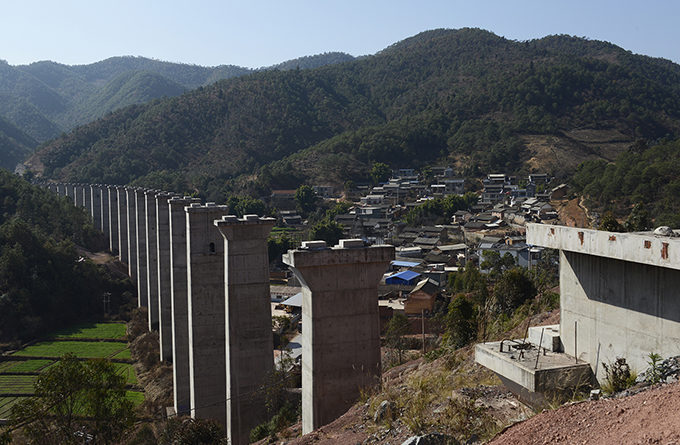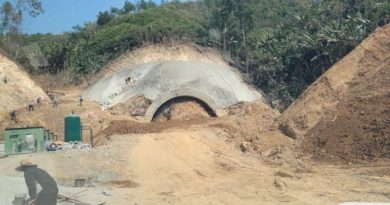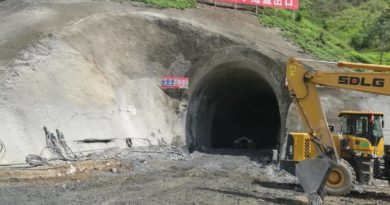Laos-China Railway Operational In 2021, 51 Tunnel Entrances Bored
Source: Vientiane Times
The Laos-China railway is planning to be officially operational in December 2021 with many tunnels already being bored, a senior government official has confirmed last week.
Deputy Minister of Public Works and Transport and Chairman of the Laos-China Railway Project Management Committee, Mr Lattanamany Khounnivong made the confirmation in his news article published in a special column of Pathedlao newspaper last week.
Some 51 tunnel entrances have been bored after construction work on the US$5.8 billion project began in December last year, Mr Lattanamany wrote.
As many as 75 tunnels totalling 197.83 km and 167 bridges of 61.81 km will be built along the 414.332 km rail line linking Vientiane with the Chinese border.
Six Chinese contractors are carrying out construction of the project striving to complete the 1.435-metre standard-gauge single-track railway on time, according to previous reports.
All three tunnels in northern Luang Namtha province were being bored with the Boten Tunnel having progressed the furthest at more than 50 metres, project coordinator for Luang Namtha province Mr Chanthachone Keolakhone told Vientiane Times recently.
The Lao People’s Revolutionary Party’s central committee and the government recognised that rail was the most efficient transport mode in the context of landlocked Laos, according to Mr Lattanamany.
He explained that rail transport was cheaper and safer, and reduces travel times with less impact on the environment. Thus the Party and government had prioritised railway development as a critical key to switch Laos from a landlocked into a land-linked country.
The opportunity had come that will enable Laos to realise its landlocked to land-link ‘strategy’, the deputy minister wrote.
“The opportunity is the implementation of the One Belt One Road Initiative,” he said, referring to the China-proposed Belt and Road Initiative of which the Laos-China railway is part.
The Lao and Chinese governments signed a Memorandum of Understanding (MoU) on the project development on April 7, 2010. Both sides then worked on project details including carrying out an economic feasibility study, plus design and investment models that ended up with China putting in a 70 percent stake, while Laos invested the remainder.
The two governments organised an official groundbreaking ceremony for the project on December 2, 2015 marking the 40th anniversary of the founding of the Lao PDR.
The electricity-powered passenger train is designed to run at 160 km per hour and 120 km per hour for the freight train.
Once the project is operational, Mr Lattanamany believed it would significantly boost trade, investment, tourism and people-to-people exchange visits and create jobs thus improving local people’s livelihoods and alleviating poverty.
The deputy minister called for local villagers, especially those living along the rail route to extend full support and cooperation to the project’s implementation.




